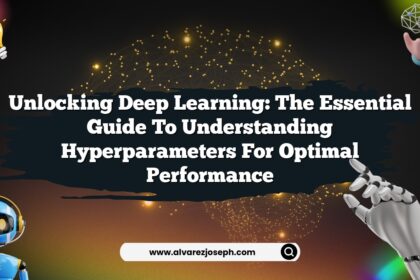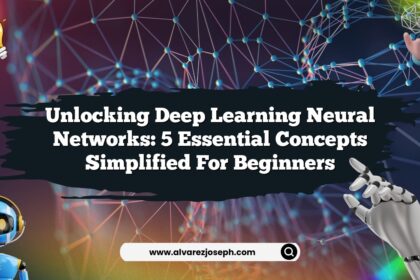Imagine, for a second, being stuck in a labyrinth with walls made of neural networks. Each turn you take is a decision bound by the complex relationships of data, algorithms, and computing power. You can almost hear the whispers of your AI project calling out to be set free, yet every step feels like a challenge. Many enthusiasts and professionals dive into the realm of deep learning, ready to unlock its potential, only to discover that the journey is fraught with obstacles. But here’s the twist: overcoming these hurdles can be not just manageable but downright exhilarating. In this article, we’ll explore seven essential strategies for success that will transform your AI projects from daunting mazes into clear pathways to innovation and success.
Navigating the Initial Learning Curve of Deep Learning
First things first—let’s address the elephant in the room: the learning curve. Deep learning isn’t just a lofty buzzword; it’s a multifaceted discipline that requires a solid understanding of various underlying concepts. From neural networks to convolutional layers, the sheer breadth of knowledge can be overwhelming.
-
Understand the Basics: Before jumping headfirst into complex models, spend time mastering the fundamentals. Familiarize yourself with key terminologies like overfitting, regularization, and gradient descent. These aren’t just academic terms; they’re the building blocks of your future success.
-
Leverage Online Resources: Platforms like Coursera and edX offer courses from top universities that are designed to cater to beginners. Dive into a course or two to solidify your understanding. It’s like training wheels for your AI bicycle—eventually, you’ll ride solo!
But what happens when you grasp the basics and suddenly feel like you’ve hit a wall?
Embracing Experimentation: The Heart of Deep Learning
This is where the real fun begins! Experimentation is the lifeblood of deep learning. It’s like being a chef in a kitchen filled with exotic ingredients. You have to mix things up and see what works best for your recipe.
-
Iterative Approach: Don’t settle for your first model. Use an iterative approach to develop and refine your models. Start simple, then gradually introduce complexity.
-
Use Different Architectures: Don’t just stick to one flavor of neural network. Experiment with convolutional neural networks (CNNs) for image data, recurrent neural networks (RNNs) for sequential data, and others.
-
Hyperparameter Tuning: This is where the magic happens! Adjust learning rates, batch sizes, and the number of layers. It’s like finding the right seasoning for your dish—small changes can lead to surprising results.
But remember, with great power comes great responsibility. How can one ensure that these experiments yield valuable insights?
The Importance of a Robust Data Strategy
Data is the fuel that powers your deep learning models. Without quality data, you’re just a kid in a candy store without any candy. It’s essential to have a robust data strategy in place.
-
Quality Over Quantity: It’s tempting to hoard data like a dragon guarding its gold, but having clean and relevant data is far more beneficial than a mountain of irrelevant junk. Focus on gathering high-quality datasets that are labeled correctly.
-
Data Augmentation: When you think you have enough data, think again! Use data augmentation techniques to artificially expand your training datasets. This could mean rotating images or adding noise to sound files—small tweaks can produce significant gains.
-
Data Cleaning: Ensure your data is clean and organized. Remove duplicates, fill in missing values, and ensure consistency. A messy dataset is like a cluttered garage; you might find a vintage bike, but you’ll have to clear away a lot of junk first.
But what if you discover that your data isn’t as pristine as you thought?
Tackling the Challenge of Overfitting and Underfitting
Ah, the infamous overfitting and underfitting conundrum! Picture this: you’re crafting a complex tapestry, but you accidentally weave in too many intricate patterns. Suddenly, the entire image is lost to chaos.
-
Regularization Techniques: Use techniques like L1 or L2 regularization to keep your models from fitting too snugly to the training data. Think of it as leaving a bit of room in your clothes so they breathe.
-
Cross-Validation: Employ cross-validation to ensure that your model performs well across different datasets. It’s like test-driving a car in various conditions to see how it handles.
-
Early Stopping: Monitor your model’s performance during training and stop once it starts to overfit. It’s better to leave a party early than to overstay your welcome.
The struggle is real, but what happens when your model finally finds that sweet spot between flexibility and generalization?
Building a Collaborative Environment for Continuous Learning
Gone are the days of the lone genius coding in isolation. In today’s interconnected world, collaboration is key.
-
Join Online Communities: Platforms like GitHub, Kaggle, and Reddit host vibrant communities of practitioners who can provide invaluable feedback and insights. Share your work and learn from others.
-
Pair Programming: Team up with a colleague to tackle tough problems together. Collaboration can lead to innovative solutions and keeps the momentum going.
-
Attend Meetups and Conferences: Networking with peers and experts can open doors to fresh ideas and perspectives. Plus, who doesn’t love a good free snack at a tech conference?
But how do you sustain that collaborative spirit in a fast-paced environment?
The Role of Cutting-Edge Tools and Frameworks
In the realm of deep learning, having the right tools is akin to a painter having high-quality brushes. Tools and frameworks can either make or break your project.
-
Explore Popular Frameworks: Get comfortable with TensorFlow, PyTorch, and Keras. Each has unique strengths that can make your life easier. For instance, Keras is like the friendly neighbor who helps you with DIY projects, while TensorFlow is the seasoned contractor who gets the job done efficiently.
-
Utilize Pre-trained Models: Instead of starting from scratch, tap into pre-trained models. They can save you time and computational resources, allowing you to focus on fine-tuning rather than building from ground zero.
-
Cloud Computing: Leverage cloud platforms like AWS, Google Cloud, or Azure for scalability and easy access to powerful computing resources. It’s like having a limitless toolbox at your disposal.
So, we’ve covered a lot of ground, but how do you ensure these tools are used effectively alongside your project’s needs?
Staying Updated with Industry Trends and Research
The world of deep learning is ever-evolving. New techniques, models, and innovations pop up faster than memes go viral. Staying updated can seem daunting, but it’s vital.
-
Follow Influential Researchers: Keep an eye on influential figures in the AI field through Twitter or LinkedIn. Their insights can lead you to groundbreaking research and developments.
-
Read Research Papers: While it may sound dry, diving into new research can spark inspiration for your projects. Platforms like arXiv are treasure troves of cutting-edge studies—like being a kid in a candy store again!
-
Attend Workshops and Seminars: Learning from established experts keeps your knowledge fresh and relevant. Just remember to take notes—your future self will thank you!
But what happens when you come across a groundbreaking concept that you want to implement right away?
Quick Summary
Here’s a neat recap of the seven essential strategies for overcoming deep learning challenges:
- Understand the Basics: Master foundational concepts before diving deeper.
- Embrace Experimentation: Use an iterative approach and explore various architectures.
- Develop a Robust Data Strategy: Focus on quality data and clean datasets.
- Tackle Overfitting and Underfitting: Utilize regularization and cross-validation techniques.
- Foster Collaboration: Engage with communities and share your work.
- Leverage Cutting-Edge Tools: Use frameworks and cloud computing to streamline development.
- Stay Updated: Follow trends and research to keep your skills sharp.
Frequently Asked Questions
What is the most important skill for success in deep learning?
Understanding the fundamentals of machine learning and being comfortable with programming languages like Python is crucial for success in deep learning.
How can I avoid overfitting in my model?
Utilize techniques like regularization, cross-validation, and early stopping to balance model complexity with generalization.
What are the best datasets for training deep learning models?
Popular datasets include ImageNet for image classification, COCO for object detection, and various datasets available on Kaggle.
How can I improve the performance of my deep learning model?
Experiment with hyperparameter tuning, employ transfer learning, and ensure your data is clean and relevant.
Is it necessary to have a large dataset for deep learning?
While larger datasets can improve performance, techniques like data augmentation can help in scenarios with limited data.
What are some common pitfalls in deep learning projects?
Common pitfalls include overfitting, poor data quality, and lack of collaboration. Regularly review your processes to avoid these issues.
By employing these strategies, you can transform your daunting AI projects into successful ventures. Remember, the journey may be challenging, but the rewards are worth every line of code!












